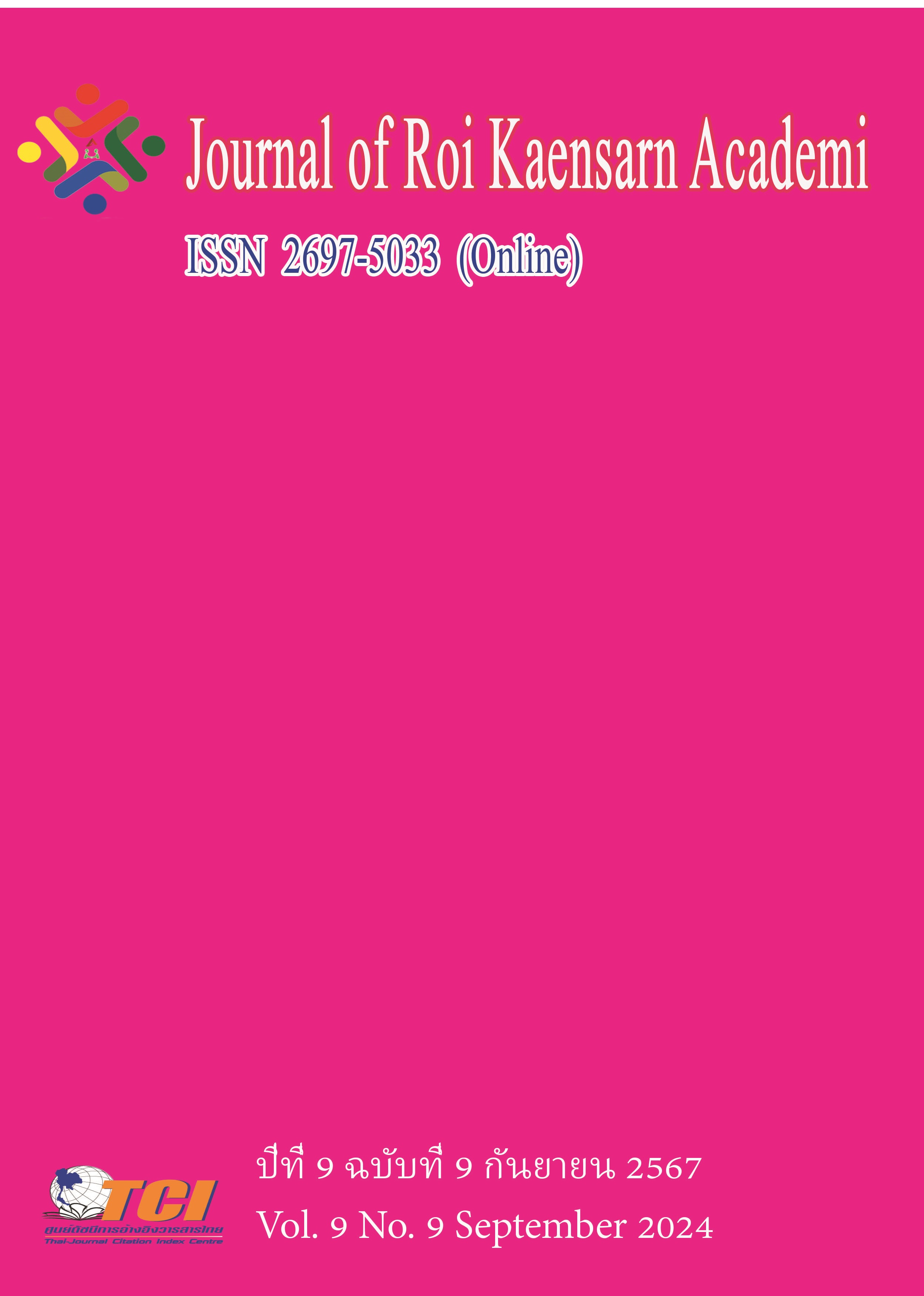คุณค่าของผักเคลด้านสุขภาพและวัฒนธรรมร่วมสมัย
Main Article Content
บทคัดย่อ
ภาวะทุพโภชนาการ เป็นปัญหาสุขภาพที่พบในประชากรทุกประเทศ อันเนื่องมาจากพฤติกรรมการบริโภคอาหารที่มีคุณค่าทางโภชนาการต่ำ การบริโภคอาหารไม่ครบ 5 หมู่ โดยเฉพาะอาหารกลุ่มผัก เคล (Brassica oleracea var. acephala) เป็นราชินีผักใบเขียวที่มีแร่ธาตุ สารอาหาร และสารพฤกษเคมีหลายชนิด มีบทบาทสำคัญในการเจริญเติบโตของร่างกาย ป้องกันโรคสำคัญ เช่น มะเร็ง สมอง หัวใจและหลอดเลือด เบาหวาน เคลเป็นพืชผักอายุยืน เจริญเติบโตได้ในสภาพแวดล้อมที่รุนแรง ทำให้ประเทศในเขตหนาวมีผักสดบริโภคตลอดปี เมนูอาหารที่ใช้เคลเป็นวัตถุดิบหลักและพันธุ์ของเคลที่ใช้ประกอบอาหารแตกต่างกันตามท้องถิ่น การบริโภคผักเคลสดทำให้ได้คุณค่าทางโภชนาการและสารพฤกษเคมีมากกว่าการปรุงอาหารหรือแปรรูป วิธีการปรุงอาหารแบบดั้งเดิมคือการผัด ต้ม นึ่ง ดอง ซึ่งรักษาคุณค่าทางโภชนาการในเคลไว้ได้น้อยกว่าวิธีการปรุงอาหารสมัยใหม่ คือการปรุงอาหารด้วยไมโครเวฟ และสุญญากาศ มีการพัฒนาผลิตภัณฑ์อาหารรูปแบบใหม่ ได้แก่ เคลผง แผ่นเคลกรอบ ขนมปังเคล สมู้ทตี้เคล ผักเคลมีความสำคัญเชิงสัญลักษณ์ในหลายวัฒนธรรม เป็นตัวแทนของความเจริญรุ่งเรือง ความยืดหยุ่น ความมีชีวิตชีวา และการเติบโตทางจิตวิญญาณ การเผยแพร่ข้อมูลด้านสุขภาพและวัฒนธรรมทำให้สังคมตระหนักถึงความสำคัญของเคล นำไปสู่การส่งเสริมการผลิตผักเคล และการพัฒนาผลิตภัณฑ์จากเคลให้เข้าถึงกลุ่มผู้บริโภคได้หลากหลายยิ่งขึ้น เพิ่มโอกาสในการเข้าถึงอาหารเพื่อสุขภาพ และนำเสนอแนวทางการอนุรักษ์ประเพณี และวัฒนธรรมที่เกี่ยวข้องกับเคลให้อยู่คู่กับชุมชนและสังคมได้อย่างยั่งยืนด้วยวิธีการที่ร่วมสมัยทั้งภูมิปัญญาดั้งเดิมและเทคโนโลยีที่เหมาะสมกับบริบททางสังคมและสิ่งแวดล้อม
Article Details
เอกสารอ้างอิง
กนกวรรณ จารุกำจร, วิลัดดา สินทร และ ชรินญา พิมพ์สอน. (2557). ความสัมพันธ์ของภาวะเครียดออกซิเดชั่นและภาวะไขมันในเลือดสูง. วารสารพิษวิทยาไทย. 29 (1-2), 57-69.
Czarnowska-Kujawska, M., Starowicz, M., Barisic, V. and Kujawski, W. (2022). Health-promoting nutrients and potential bioaccessibility of breads enriched with fresh kale and spinach. Foods. 11 (21), 3414,1-14.
Elizabeth, K. (2015). Grunkohl Tour: A northern German tradition that celebrates kale. Online. Retrived 24 August 2024. From https://elizabethkovar.com/grunkohl-tour-a-northern-german-tradition-that-celebrates-kale/.
Joshi, S., Jadhav, V. and Kadam, V. (2018). Exotic fruits and vegetable food as nutritional supplement for diabetes, obesity and metabolic diseases. International Journal of Current Pharmaceutical Research. 10 (2), 51-55.
Khalid, W., Ikram, A., Nadeem, M. T., Arshad, M. S., Rodrigues, S. de O., Pagnossa, J. P., Al-Farga, A., Chamba, M. V. M., Batiha, G. E-S. and Koraqi, H. (2023). Effects of traditional and novel cooking processes on the nutritional and bioactive profile of Brassica oleracea (Kale). Journal of Food Processing and Preservation. 2023 (1), 1-12.
Klopsch, R., Baldermann, S., Voss, A., Rohn, S., Schreiner, M. and Neugart, S. (2019). Narrow-banded UVB affects the stability of secondary plant metabolites in kale (Brassica oleracea var. sabellica) and pea (Pisum sativum) leaves being added to lentil flour fortified bread: A novel approach for producing functional foods. Foods. 8 (10), 427, 1-20.
Rankel, K. (2024). Symbolism and benefits of the kale. Online. Retrived 7 September 2024. From https://greg.app/kale-benefits/.
Savory Suitcase. 2023. The Cultural Significance of Kale in Cooking. Online. Retrived 27 August 2024. From https://www.savorysuitcase.com/the-cultural-significance-of-kale-in-cooking/.
Shafi, S., Murtaza, I., Mukherjee, G. and Singh, D. (2022). A review on kale as a substantial meal. NeuroQuantology. 20 (8), 2168-2172.
Subedi, U., Raychaudhuri, S., Fan, S., Ogedengbe, O. and Obanda, D. N. (2024). Fermenting Kale (Brassica oleracea L.) enhances its functional food properties by increasing accessibility of key phytochemicals and reducing antinutritional factors. Food Science & Nutrition. 12, 5480-5496.
Samec, D., Urlic, B. and Salopek-Sondi, B, (2018). Kale (Brassica oleracea var. acephala) as a superfood: Review of the scientific evidence behide the statement. Critical Reviews in Food Science and Nutrition. 59 (15), 2411-2422.
USDA. (2012). Census of agriculture. Online. Retrieved December 31, 2022, from https://www.agcensus.usda.gov/Publications/2012/Full_Report/Volume_1,_Chapter_1_US/st99_1_038_038.pdf

